StoryBrand Principles: What Problem Are You Solving For Your Customers?
StoryBrand Principles: What problem are you solving for your customers?
When it comes to getting your customers to engage with you, there’s nothing quite like the power of story. But for stories to be compelling, they need to have a hook – or, in this case, a problem.
Whether you’re talking cinematic masterpieces or your Auntie Jean’s recollection of the time she saved her cat from a tree, no story truly takes off until the hero of the story faces a problem they need to solve. Because let’s face it, without a problem the hero has no purpose, and the story has no substance.
Let’s look at Harry Potter. Without Voldemort, there’s just a collection of books about young wizards mastering the art of magic in school. While it may be an interesting concept, it’s hardly Oscar-winning. The story is made far greater by the problem Voldemort poses to Hogwarts and the main character, Harry Potter.
The same goes for business.
Your customer is the hero and once you’ve figured out what it is they ‘want’ you need to define what it is that’s getting in the way of them achieving this – the problem they need your help to overcome. If you fail to talk about your customer’s problems, they will stop paying attention to your brand. Because if you aren’t solving a problem for your customers, there’s no reason for them to do business with you.
What problems could your customer face?
For business owners, problems come in all shapes and sizes. In the corporate world, they could be knowing how to increase your annual profit margins or needing a new tech firm for support. For small business owners, it could be as simple as finding a new packaging supplier or someone to help with your tax return.
Regardless of the problem size, it is of great importance to the hero and it’s your job to help them solve it. So, start by asking yourself what problem your business solves for your customer.
It’s important to take the time to clearly define this. Your customer may have 99 problems to paraphrase Jay Z, but you need to be talking to the specific problem your business can solve for them. You might feel you solve a magnitude of issues for your customer, but talking about too many problems can muddy the waters and make for a confusing message. It is best that you clearly define what the main problem is that your customer is facing and stick to it throughout your messaging.
Breaking down the problem
There are several layers of problems your business can and should solve for your customers:
1. The external problem
The external problem is the problem that leads your customer to your service or product. It’s the thing that’s getting in the way of what your customer wants and is typically the easiest part of the problem to identify. If you own a car repair shop, for example, the external problem is a broken-down car, but more than that. The problem needs to go a level deeper. Perhaps it is that mechanics can’t be relied upon – they charge through the nose or botch the repair job. But remember, it’s important to focus on just one problem. Unreliable mechanics and expensive mechanics are two different problems so choose one that you feel addresses your customer’s pain points more.
To speak to the external problem of unreliable car mechanics, your marketing might say something like “Car repairs you can rely on.” For expensive mechanics you might say “Top quality car repair service that doesn’t cost the earth.” These are clear, concise, and obvious as to what service you offer and the problem you solve for your customers – you repair their car, and you’re reliable, or you repair their car for a reasonable price.
2. The internal problem
While the external problem is a tangible thing getting in the way of your customer getting what they want, this always manifests as an internal emotion. The internal problem then is an important factor in your marketing strategy as it is how your customer actually feels. Having this feeling is what motivates someone to take action, so you need to speak to this in your marketing.
An internal problem for the car repair shop customer may manifest as stress or frustration. It’s frustrating when your car breaks down. Choose an emotion, an internal feeling that your customer feels because of the external problem they face and speak about that feeling. When you address the internal problem, your business will be able to connect to your customers on a more personal level and help them see you truly understand their problem and can fix it for them.
3. The philosophical problem
Lastly, there is the philosophical problem – the why this is just plain wrong that your customer should even face this problem.
When talking about the car repair shop, no one should have to worry about whether their car can get them from A to B or be taken for a ride by dishonest mechanics.
A philosophical problem could be something like “When your car breaks down the last thing you need is the added stress of a dodgy repair. You deserve mechanics you can trust to fix your car right the first time.” By connecting your product or service to a wider idea of how things should be, you align your business as the solution and create greater value in the process.
Usually, businesses sell their products to solve a customer’s external problem, yet, customers typically buy to solve their internal ones. Customers buy because an external problem is manifesting itself as an internal problem (an emotion) and they don’t want to feel that emotion anymore. Customers spend money with a business because they can help them stop feeling stressed, frustrated, or worried. The best businesses solve both the external and internal problems at the same time.
To connect with your customers and give yourself the best chance of them doing business with you, be sure to speak to both your customer’s external and internal problems so they know you’re the best for the job!
Want to get clear with your messaging?
Need help getting your message across to potential customers in a way that resonates? STORY22 is a full-service marketing agency that utilises the power of story in marketing to engage customers more effectively and win business faster.
To find out how they can help take your business to new heights, click here.


